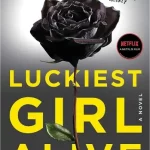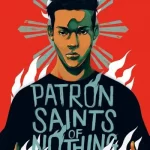
3 Sentence Summary
“The Personal Librarian” by Marie Benedict and Victoria Christopher Murray is a historical fiction based on the true story of Belle da Costa Greene. Belle is a J.P. Morgan’s librarian, who conceals her Black identity by passing as white. The novel explores her fascinating journey of identity, sacrifice, and the complexities of racial passing during a time of discrimination.
Summary Read Time: Less than 8 minutes
Actual Book Length: 341
First Published in: 2021
Below is the detailed yet quick The Personal Librarian book summary:
Part 1
In late 1905, Belle da Costa Greene, a 26-year-old Black American passing as white, works as a librarian at Princeton University, where Woodrow Wilson serves as president. As the university remains exclusively male and white, Belle navigates the racial divide carefully. Her friend, Junius Morgan, a generous alumnus, proposes Belle for the position of personal librarian to his uncle, the financier J. P. Morgan.
Belle is subsequently called to New York City for an interview, reuniting her with her family residing in a modest brownstone. Reflecting on her family’s past in Washington D.C., Belle recalls her parents’ differing attitudes towards passing as white, ultimately leading to the departure of her father, Richard, a former dean of the Howard University School of Law and an advocate for equal rights for Black people.
The interview at the opulent Pierpont Morgan Library sees Belle responding confidently to J.P. Morgan’s assessment of her qualifications, pledging to make his library incomparable. Her successful appointment provides financial relief to her family and promises entry into high society. Despite the excitement, Belle grapples with concerns over J.P. Morgan’s temper and the constant need to maintain her white identity. In her introspection, Belle remembers her father’s encouragement of her love for art and history, and the resistance from her mother who preferred her to pursue a more conventional profession. To ensure she excels at her job, Belle embarks on learning Latin, an essential tool for interpreting ancient texts that Mr. Morgan may seek.
By May, Belle’s contributions to the library earn Mr. Morgan’s respect. Though she is yet to locate a rare copy of Thomas Malory’s “Le Morte Darthur,” as requested by her employer. Navigating Mr. Morgan’s private life, which includes his female companions and his children, Belle earns an invitation to a Vanderbilt ball, a perfect setting to mingle with dealers and collectors.
Despite her solitary arrival, viewed as a social blunder, and her relatively simple attire, Belle manages to charm the elite crowd. After a successful evening, Belle returns home, her tiredness overridden by her mother’s insistence on completing her daily language lessons. Through this seemingly strict demeanor, Belle realizes her mother’s unspoken support and care.
Part 2
From November 1906, Belle begins to establish her footing as Mr. Morgan’s personal librarian, taking on the task of acquiring a King Charles First-owned Bible. A strategic move, it firmly asserts the Pierpont Morgan Library on the auctioning landscape, despite Belle facing gender-related ostracization. Concurrently, Belle deftly deflects suspicions regarding her racial heritage, sprung upon her by Anne and her social circles.
The subsequent year unfolds in a whirlwind of personal and professional growth for Belle. By 1907, she finds her name in The New York Times, and with a raise under her belt, she begins navigating New York’s social scene with tact.
However, the year also brings an economic downturn, providing Belle with valuable financial insights as she assists Mr. Morgan in leveraging the crisis. Amidst the crisis, there’s an undercurrent of attraction between Belle and Mr. Morgan, but professional boundaries remain unbreached.
In 1908, Belle confronts the challenging task of reconciling her racial identity with her public image during a family trip to Washington, D.C. The news of her estranged father’s return adds another layer of complexity to her situation.
Back in New York, she continues to rub shoulders with the art world, steering clear of controversies while furthering the Pierpont Morgan Library. An influential trip to London cements Belle’s professional prowess as she successfully negotiates a pre-emptive bid for Caxton’s works. On returning, Belle finds herself intrigued by Bernard Berenson, a celebrated Italian art expert, further expanding her horizons.
Part 3
In the late winter of 1909, Belle is asked by Mr. Morgan to attend the opera with Rachel Costelloe. There’s a hidden agenda attached to find out about the art procurement intentions of Isabella Stewart Gardner. Belle’s intrigue for Mr. Berenson is fueled further during this encounter. Rachel, unaware of her father’s business matters, discloses that Mr. and Mrs. Berenson share an unconventional open marriage. This causes Belle to ruminate on the prospects of a similar arrangement.
A private meeting with Bernard at the MET culminates in a dinner at his hotel suite, where their relationship becomes physical. However, Belle halts the progression and Bernard pledges to prove his dedication to her.
By the spring of 1909, Belle becomes more flamboyant and provocative in her social life, gaining popularity but feeling like a spectacle. To escape the societal pressures, she arranges for her family to spend the summer at a lakehouse.
During her solitude, she reconnects with old friends from school who express admiration for her accomplishments. This inspires Belle, leading her to read letters Bernard sent her. In 1910, Belle starts to feel overwhelmed by Mr. Morgan’s increasing dependency on her. It’s an emotion catalyzed by her participation in Morgan’s family gatherings.
Proposing a trip to London and Italy under the pretext of acquiring a rare manuscript for the Pierpont Library, Belle is actually planning to reunite with Bernard. She lands in London with her chaperone Marie, who leaves to visit Switzerland, allowing Belle and Bernard to be alone.
After various encounters with art dealers, they travel to Italy, and their relationship culminates in an intimate encounter. Belle is left questioning Bernard’s identity and origin. The fall of 1910 brings turbulence when Belle discovers her pregnancy and Bernard’s indifferent reaction to the news. Forced to confront the harsh realities of her racial identity and societal norms, Belle resorts to aborting the pregnancy. Heartbroken, Belle returns to the States, where a chance encounter with Anne Morgan reveals that her secrets may be unravelling.
Part 4
Belle’s life, post-Europe, remains complicated with Bernard’s persistent letters. During a night out at the Century Theatre, she drinks heavily and shares a cryptic comment about her “dark blood” with Giulio Gatti-Casazza.
Belle’s mother admonishes her reckless behavior at home and shares a family backstory. She reveals their history of advocacy for equality and the painful realities of racial prejudice that led them to opt for passing as white for survival. The revelation deepens Belle’s understanding of her mother’s decisions and strengthens her resolve to utilize her present opportunities effectively.
Life carries on for Belle, now balancing Mr. Morgan’s personal affairs alongside her professional responsibilities. She secures two apartments, one for her family and one for herself. At an auction, Belle successfully bids a whopping $50,000 for a prized edition of “Le Morte Darthur” that Mr. Morgan had long desired. This generates significant press coverage. Belle’s relationship with Mr. Morgan also takes a romantic turn. Though she ultimately rejects him, questioning the wisdom of her decision later.
By 1913, Belle and Mr. Morgan’s rapport becomes strained due to his increased possessiveness and jealousy. Tragedy strikes when Mr. Morgan falls ill and dies, leaving his son Jack in charge of the library and a generous bequest of $50,000 to Belle.
Dealing with grief, Belle dives into reading and engages with civil rights literature, pondering her role as a black woman passing as white. A dinner with friends introduces her to W. E. B. DuBois’s work, prompting a deeper self-reflection. Finally, a meeting with her estranged father in Chicago helps her grapple with her identity crisis. It leaves her pondering on whether to continue passing as white.
Part 5 – How Does “The Personal Librarian” Book End?
Belle encounters Bernard in New York again, accompanied by Mary. Following Mary’s revelation about Bernard’s Lithuanian origin, Belle compassionately decides to maintain a noncommittal relationship with him. Subsequently, Jack returns from his travels, praising Belle’s impeccable administration of the Pierpont Morgan Library. Their conversation culminates in an agreement to keep Belle in her current role. Unexpectedly, Belle’s heritage is discovered by Anne, who ensures Belle that her secret is safe.
In 1916, Belle, now in England, is engrossed in acquiring rare books and discussing potential art deals with Jack. However, her venture in Paris is halted due to the ongoing war. During this period, Belle is betrayed by Bernard. He had divulged confidential information about Mr. Morgan’s assets to potential brokers, the Duveen brothers. This shattering revelation ends Belle’s relationship with Bernard, despite his apology. Later, Belle loses her father and visits his grave, sparking her contemplation on her own legacy.
As the story concludes in 1924, the United States witnesses increasing racial tensions. Belle, in her elevated professional status, grants an interview to the New York Times, revealing the library’s transformation into a public entity. Fast forward to 1948, an elderly Belle, attempting to preserve her legacy, destroys old records and letters, potentially exposing her true racial identity. Despite her efforts, she is left contemplating the possibility of her secret being discovered posthumously.





